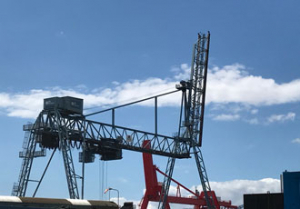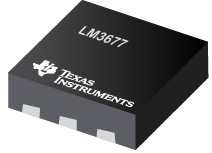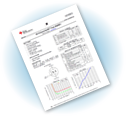Understanding the internal geometry of ball bearings

The humble bearing has many geometric factors such as radial play, axial play and the contact angle which are interlinked and must be carefully considered to ensure the optimal performance of the component. Here Chris Johnson, Managing Director at SMB Bearings explains what design engineers need to know about radial play.
In short, internal clearance or radial play is the amount of looseness between the balls and raceways of a bearing. It is a common misconception that this is in fact linked to the tolerance of the bearing. However, a loose bearing does not necessarily mean a low precision bearing.
For example,you can have a P4 (Abec7) grade bearing with a loose radial play just as you can have a P0 (Abec1) bearing with a tight radial play. Consequently, radial play has nothing to do with precision grade or quality of a bearing, but can be a vital factor when considering a bearing’s service life or performance.
A normal radial play is usually suitable for standard applications. These bearings also have the advantage of being readily available. However, there are certain operational characteristics that call for a tighter or looser radial play.
A loose radial play is preferable for high axial loads as it provides a greater contact angle to increase the bearing's axial load capacity. It will also better accommodate misalignment between the shaft and housing, increase axial stiffness in a preloaded pair, can offset interference fits and can offset some expansion and contraction in shafts and housings due to temperature change. For example, if the shaft is made of different material to the bearing and housing, it can expand more due to a different expansion coefficient. In such a case, a bearing with a looser radial play may be needed.
On the other hand, for low noise, greater rigidity and running accuracy if the load is purely radial, a tight radial play is better. In low noise or high-speed applications, zero residual radial play is desirable. This gives greater rigidity, reduces axial play, reduces the tilt angle, reduces noise and vibration, gives greater running accuracy and can eliminate ball skidding under acceleration.
This is achieved by applying a preload to the bearing. This is an axial load applied to the inner or outer ring to offset the outer ring against the inner ring and eliminate radial play. Preload is usually applied using wave or spring washers and normally to the stationary ring. This should have a sliding fit to the shaft or housing to allow for axial movement. If the bearings are glued on to the shaft or housing, it may be possible to use weights to keep the bearing preloaded while the adhesive cures. Preload can be increased to provide greater stiffness but this will increase rotational resistance. Guidance on the amount of preload for bearing rigidity versus torque is given on the SMB website. Excessive preload can cause high frictional torque and rapid failure.
It’s clear that the internal geometry of a ball bearing is far more complex than it may appear on initial inspection. Understanding the radial play considerations is just one technical characteristic, which must be balanced with other application specific design considerations.
Similar articles
More from SMB Bearings
- Should remanufactured bearings become the norm? 21st May 2021
- Radial and thrust forces in bearings 6th April 2021
- Ceramic bearings for medical environments 24th March 2021
- The myth surrounding hybrid ceramic bike bearings 18th March 2021

-(1)ed.jpg)










Write a comment
No comments